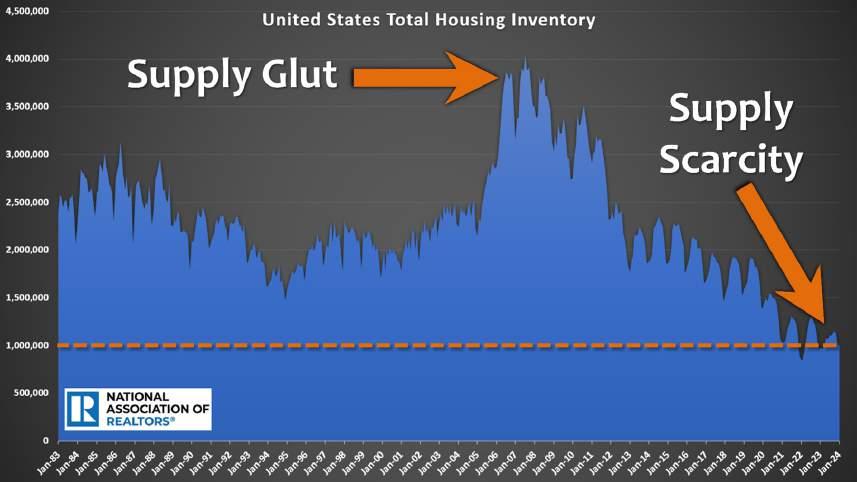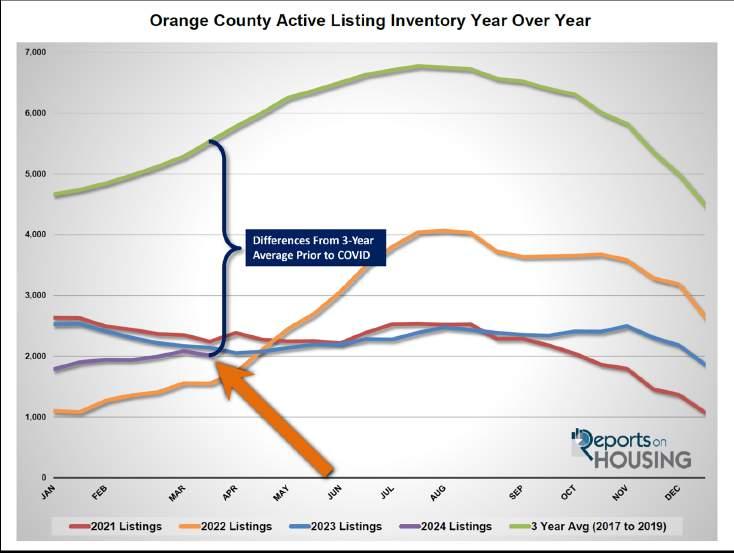
6 minute read
Buy a Home Now or Wait?
Prospective home buyers are perplexed by today’s competition to purchase, which will only amplify when rates drop in the future.
By Steven Thomas REPORTSONHOUSING.COM
Steven Thomas has a degree in quantitative economics and decision sciences from the University of California, San Diego, and more than twenty years of experience in real estate. His bimonthly Orange County Housing Report is available by subscription and provides housing market analysis that is easy to understand and useful in setting the expectations of both buyers and sellers. His website is www.ReportsOnHousing.com.
Many potential buyers are sitting on the sidelines, waiting for the market to become more affordable. Combining high home values and significantly higher mortgage rates, the expectation was for home values to plunge. Home affordability has collapsed due to rates rising from 3.25% in January 2022 to 7% today. Purchasing a home is out of reach for so many Americans. The logic is simple: either incomes rise substantially, interest rates significantly fall, or home values tumble. They believe that the only proper solution is for home values to collapse.
Yet, the housing market has proven to be exceedingly resilient, despite higher rates and low home affordability. Incomes have not suddenly spiked, mortgage rates have not plunged, and home values have risen year over year. Housing has played out much differently than expected. Buyers new to the housing arena are shocked to find tremendous competition. Jam-packed open houses, multiple offer bidding wars, and sales prices at or above the asking prices are the norm, especially in the lower price ranges.
It is best to look at supply and demand to understand why home values have not collapsed. Before and during the Great Recession, there was a glut of homes available across the U.S. Before 1995, the inventory averaged 2,250,000 homes, according to the National Association of REALTORS® (1982 to 2005). From 2006 to 2010, it averaged 3,430,000, 52% higher, and even eclipsed 4,000,000 homes in July 2007. During the Great Recession, demand plunged. With a glut of homes available and very low demand, home values crashed. Yet, since 2021, the U.S. inventory has averaged 1,100,000. In January, it was at 1,010,000. There is a scarcity of homes available to purchase. With higher rates, demand has plunged once again. This time, low demand is matched up against a chronically low inventory. This has resulted in rising home values.

In Orange County, there were only 2,017 homes available at the start of April. The 3-year average before COVID (2017 to 2019) was 5,553, 174% higher than today, or an extra 3,516 homes. That is when housing was appreciating methodically from year to year. Home values continuously appreciated annually from 2012 through 2019. The housing market was not out of control, and the supply of available homes to purchase before COVID was at normal levels. On the other hand, this year’s inventory is at chronically low, anemic levels.

Even with limited demand, Orange County's inventory has struggled to grow. The main culprit is the lack of homes coming on the market. When there are fewer FOR SALE signs, it is challenging for homes to accumulate to grow inventory. In 2023, there were 41% fewer sellers than the 3-year average before COVID. That is over 16,000 missing signs. In January and February of this year, there were 36% fewer sellers or over 2,200 missing signs. Orange County demand has been exceedingly low. This is partly due to the lack of homes available in the lower price ranges. At the start of April, demand was at 1,617 pending sales, 4% more than last year’s 1,560 pending sales. The 3-year average before COVID was 2,668, 65% higher than today, or an extra 1,051 pending sales.
Low demand levels do not mean that the market is not exceptionally hot. The Expected Market Time (the number of days to sell all Orange County listings at the current buying pace) to start April was 37 days. At 37 days, buyers compete, bidding wars are the norm, and home values are rising. This occurs with a scarcity of supply, which is precisely what the housing market is experiencing today.
Why is right now a good time to buy rather than waiting for qualified buyers? Rates are expected to drop this year. In March, the Federal Reserve projected reducing the Federal Funds Rate three times this year. Their dual mandate is for both maximum employment and stable prices. The job market has been robust, and inflation is coming down towards their 2% target. Despite plenty of positive numbers, the U.S. economy is facing many headwinds. Personal savings rates are low. Pandemic-era excess savings from government stimulus checks are running out. Credit card debt is growing at an abnormally fast rate. Credit card, automobile, and multi-family delinquencies have been rising rapidly. Eventually, the economy will slow from its current brisk pace. Most economists agree that a recession is not in the mix, but economic growth will slow. When this occurs, investors move their money to the haven of 10-year treasuries and mortgagebacked securities, resulting in a substantial drop in mortgage rates. At first, rates will drop between 6% to 6.5%. Eventually, if the economy remains cool with duration, rates could fall below 6% for the first time since August 2022.
Lower rates will result in an immediate boost in the number of buyers looking to purchase. Affordability will drastically improve. Demand readings will improve virtually overnight. Eventually, as rates drop, the number of homeowners willing to sell will increase. But remember, 85% of all California homeowners with a mortgage are enjoying a fixed rate at or below 5%. Not everyone will be inclined to trade their low rates for a higher one. The dramatic increase in demand will outpace the number of additional homeowners willing to sell. As a result of this mismatch, the housing market will grow even hotter, the number of multiple offers will increase, bidding wars will become fiercer, and home values will rise.
It was true a year ago, and it is true today: The time is now. Buyers who wait will face increased competition, and purchasing a home will become even more challenging.










